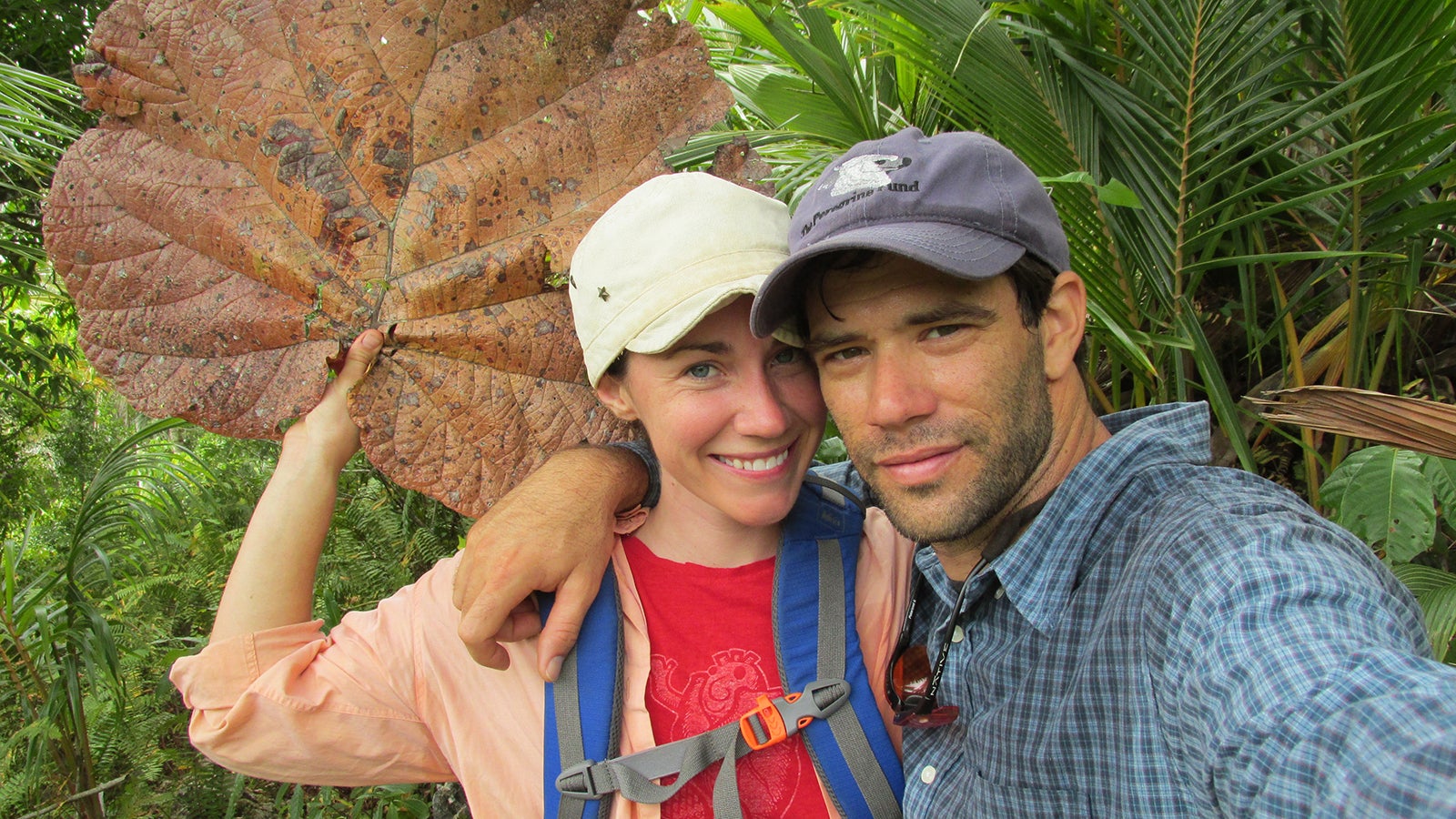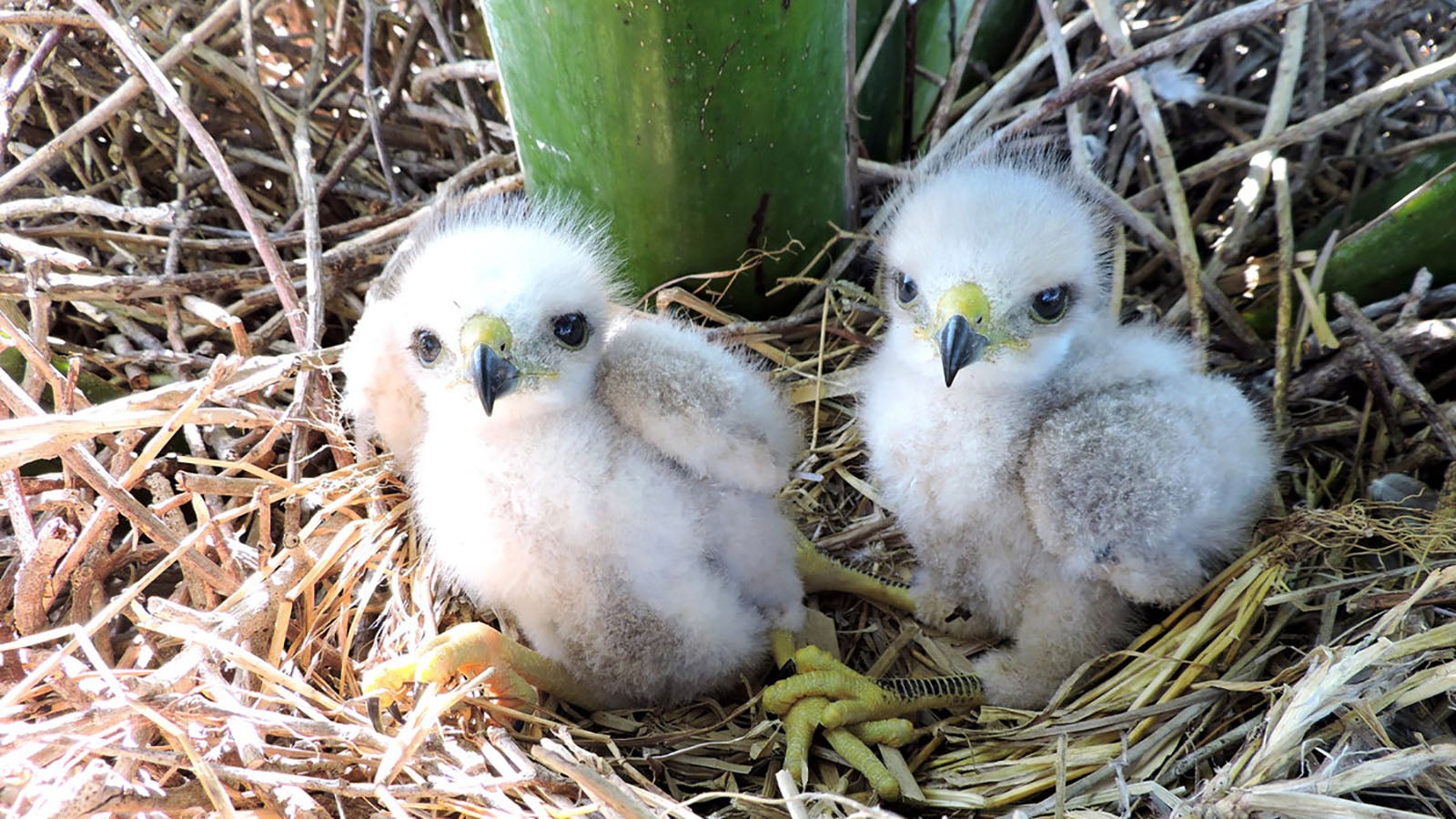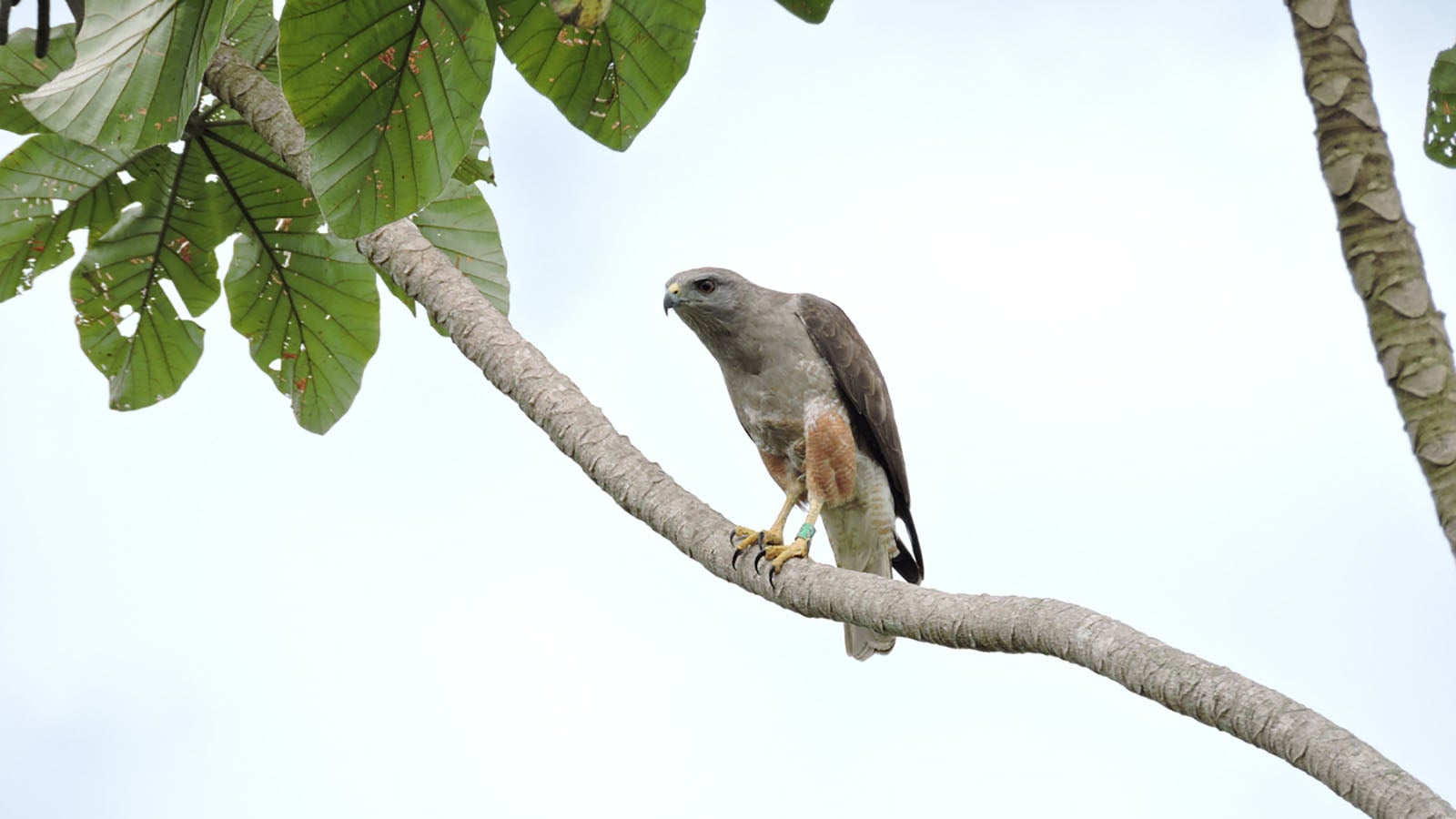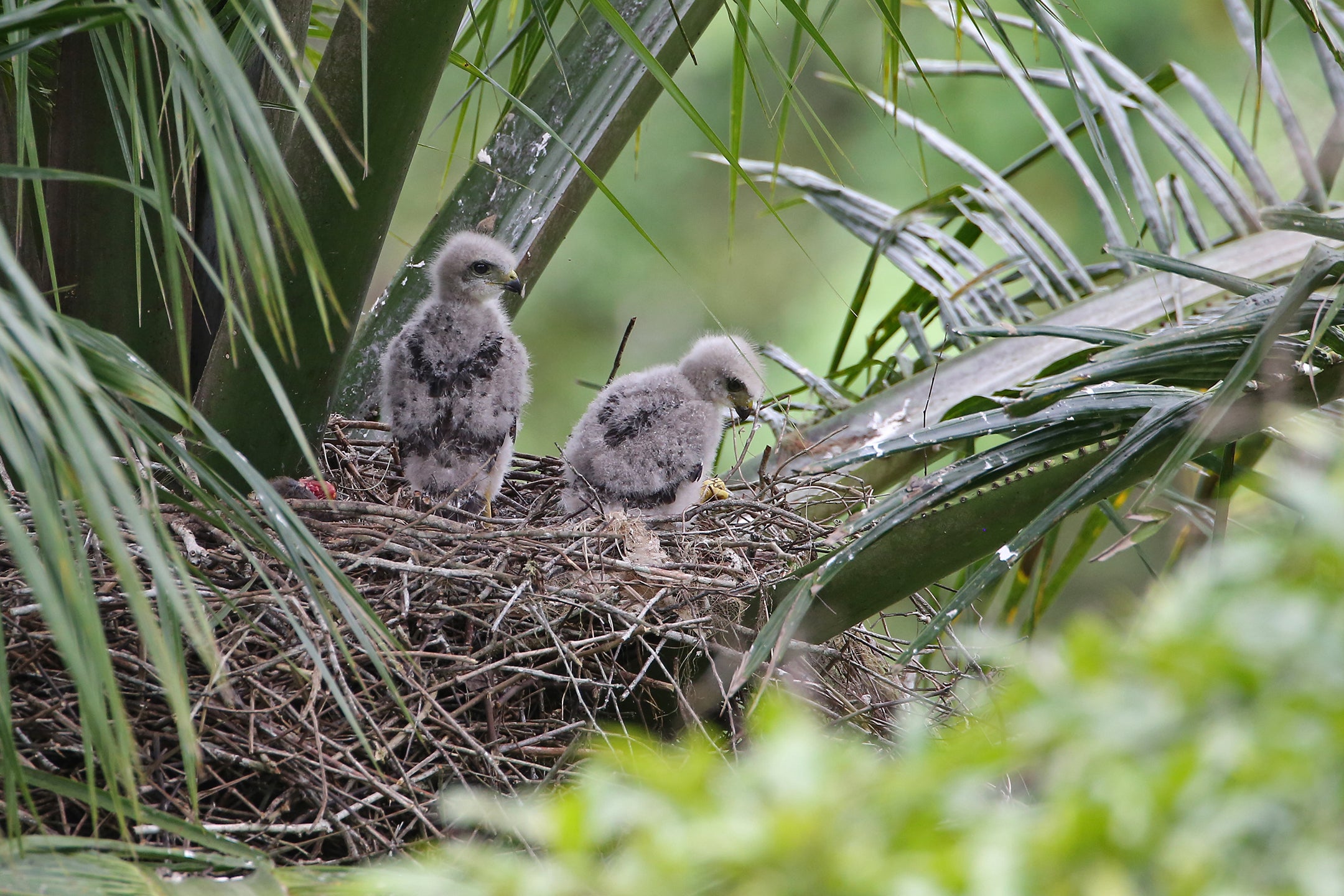
Christine Hayes’s family tells her that her very first word was “bird.” As a grade schooler, Thomas Hayes created a donation jug and collected fellow students’ lunch money in the cafeteria to support a local birds of prey conservancy. So it’s really not an exaggeration to consider the married couple “birds of a feather.”
Between the couple, they have nearly 50 years of experience in bird and raptor rehabilitation, husbandry, conservation and propagation. Their combined efforts are wound around the lives and conservation of birds of prey, namely the Ridgway’s Hawk. For Christine, a 2019 alumna of the master of raptor biology program at Boise State University, and Thomas, the Ridgway’s Hawk project coordinator with The Peregrine Fund, this means completing an astonishing series of research tasks and initiatives.
Found only in a small area of the Dominican Republic, the Ridgway’s Hawk has been prey to multiple negative forces. Despite the fact that the hawks help keep rodent populations down, they are persecuted by Dominican farmers and even known by the word “dañino” which means “harmful.” Deforestation destroys their habitats. Local cacao planters put out poison for rats, introducing toxic elements into the hawk’s food chain. Throw into the mix a particularly vicious botfly larva that eats nestlings, and it is not difficult to understand why the species is one of the most critically endangered raptors in the world.

Through the partnership between Boise State and The Peregrine Fund, students and graduates like Christine Hayes are able to use their degree in conservation efforts all over the world. Christine’s mentor, Dr. David L. Anderson, (a former Boise State professor as well as ‘98 graduate of the raptor biology program) who now serves as the Gyrfalcon Conservation Director at The Peregrine Fund, spoke of the incredible opportunities the partnership offers students to directly impact the conservation of a species like Ridgway’s Hawk.
“Here is one of the most critically endangered raptor species in the world and The Peregrine Fund and Boise State University together — because this was a true partnership — find a way to get a student in the program working towards solutions to save that species,” he said. “That is something to celebrate.”
Conservation of an endangered species is an undertaking that must be approached from multiple and oftentimes unexpected angles, and the Ridgway’s Hawk is no exception. From treating nestlings against botfly larva, to providing chicken cages to local farmers, to conducting large-scale efforts including nationwide education campaigns and joining with local cooperatives to promote ecological practices, the span of conservation efforts needed to ensure the future of this single species is nothing short of jaw-dropping.

Yet to listen to the couple discuss their work, what surfaces above all is a passion for what they do. Perhaps the most essential element to developing a lasting conservation effort is addressing the needs of the community, because a true change of cultural perceptions must come from the local level. Together, Thomas and Christine Hayes have been working to train Dominicans – many of whom didn’t finish high school – to conduct research, educate their communities and carry out the invaluable mission of protecting a species whose survival and future depends on human involvement.
“It’s in their community, and for them to say, ‘No, don’t shoot that bird’ means so much more than two people from somewhere else saying ‘No, don’t shoot these birds, they’re important,’” Christine said.
In 2011, when Thomas was first sent to the Dominican Republic to monitor the raptors, their numbers had dwindled to as little as 109 pairs, and their narrow geographic distribution meant that a single catastrophic event such as fire or hurricane could decimate the entire species. Today, thanks to conservation efforts, Ridgway’s Hawks are found in three separate locations in the Dominican Republic and their numbers have risen to more than 400 individuals. Through the education programs and training of Dominicans to monitor and care for the birds in the absence of Thomas and Christine, the species soon could be removed from critical endangered listing.
